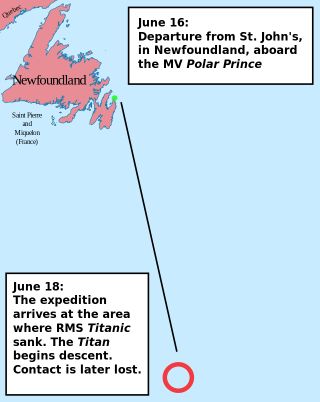Trauma
Engineering Ethics 101: The Titan Submersible Disaster
Could a $1,000 sonobuoy have obviated a multimillion dollar search?
Posted June 27, 2023 Reviewed by Hara Estroff Marano
Key points
- It's unlikely humans will stop trying to get the farthest and most dangerous recesses of the planet,
- Preparation and forethought can stave off disaster and loss of life.
- Could a $1,000 investment have obviated a multimillion dollar search?

I was recently asked to teach Engineering Ethics at my university, which I haven't had the opportunity to do since graduate school. If I were to teach it, I would start with the Titan submersible debacle that hijacked the attention of a large portion of the world for the better part of a week.
I am extremely saddened by the outcome of the adventure, perhaps most of all for the 19-year-old on board who reminds me of my college students I care so much about.
When I taught Engineering Ethics in graduate school, I was advised to focus on case studies: the Ford Pinto; the Challenger; trampling disasters at large venues with horrible exit designs. The Titan seems destined to join this list of magnificent engineering feats designed to satisfy some innate human curiosity that overpowers the need for caution and careful consideration. Even after this deep water disaster, it's unlikely humans will stop trying to get the farthest and most dangerous recesses of the planet, but it is likely they'll be exploring within stricter safety precautions for eveyone's benefit.
The search for the Titan involved (at least) four nations: the US; Canada; England; and France. And involved untold assets: planes; ships; military; Coast Guard; ROVs (remotely operated vehicles), that believe they were operated in a race against the clock given OceanGate's report that the submersible held an oxygen reserve of 96 hours: the clock was ticking.
As soon as the many reinforcements reached the mother ship, Polar Prince, they dropped sonobuoys to listen for implosions, explosions, banging noises (from the crew), or anything. Those sonobuoys dropped *after* the submersible lost contact with the mother ship picked up nothing suspicious. So the event, we can infer, had already occurred.
So, here is the question: why didn't OceanGate think to drop a $1,000 sonobuoy into the ocean when it launched the Titan? If it had, the Polar Prince would have heard the boom and inferred that maybe something catastophic had happened. They would have contacted the Coast Guard who then would have come out and dropped an ROV to that exact site. No need for several countries involved. No need for tons of ships and planes. No need to search the surface area the size of Connecticut. No need to report "banging noises," giving false hope, no need to give the family members and the world, false hope.
One $1,000 sonobuoy deployed in the immediate area of the Polar Prince could have obviated all of that effort, money, worry, time, and panic against time.
This search, all told, will likely cost in the hundreds of millions. But might have been prevented by a $1,000 buoy. That's how I'd begin my Engineering Ethics class on the Titan submersible disaster.


